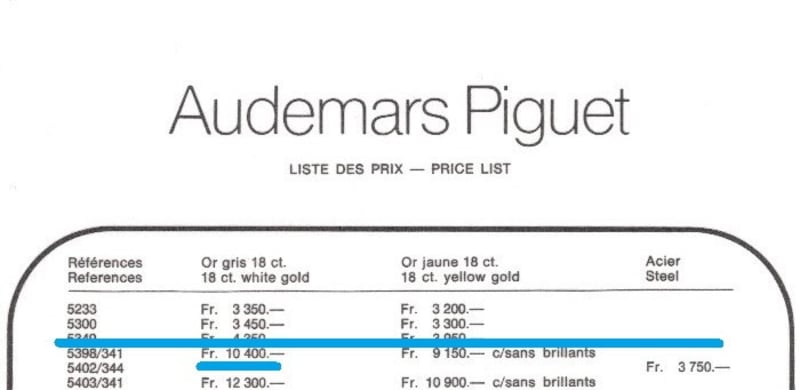In the early 1970s the pricing of the back-then actual models was according to the material used and the efforts / work of artisans necessary to create the product -- that culminated in pricing relations like in the Swiss catalogue shown: The jumbo cobra (ref5403) with integrated gold-bracelet (yes, handmade of course) on top, with the medium-sized cobra (ref5398) following close behind and the steel-made jumbo 1st series AP Royal Oak (ref5402) -- back then only available in steel -- priced at around just 1/3 of these. Needless to say, this relationship changed nowadays and needless to say this pricing also reflects rarity, as we can assume that more expensive products where sold less than cheaper ones.
But there is more than that: Back then this relationship also reflected what could be vaguely described as "quality". So, when you compare the Jumbo Cobra to the Royal Oak then it becomes obvious they dont share much but the same legendary automatic-movement cal2121. While you have a haptic epiphany in the serious weight of the Cobra you are slightly surprised how the quite big steel comparison feels: lightweight. Not to speak about the production-tolerances the goldsmiths of the Cobras were asked for, compared to the first steps in automated steel-cutting we can see in the APRO pioneer.
Indeed, there is more to a watch than its quality. And the century-watch APRO ref5402 marks a milestone in horology for other reasons -- for starting a journey and a dominant industry-trend into machine-cut luxury steel-sportwatches. Nice and justified. But the classics of watchmaking with integrated bracelets like the jumbo and medium Cobra, that reached excellence around the same time when the other trend was sparked in the early 70s, mark a milestone as well: The pinnacle, the endpoint in excellence of handmade gold cases & bracelets.
